|
|
|
[Jackson, Herbert J.].
[European Hand Firearms of the Sixteenth, Seventeenth & Eighteenth Century:] "Scottish Hand Firearms of the XVIth, XVIIth & XVIIIth Centuries." [ORIGINAL COLLOTYPE PRINT].
Original single-sheet collotype print of fine quality. Overall size ca. 30 x 24 cm. Very good. First, limited edition, printed on heavy paper with very wide margins. Collotype is one of the most accurate and attractive methods of photomechanical tonal printing processes. Highly skilled and expensive process, it cannot produce more than a limited number of impressions. It has been used for single-sheet prints and luxury portfolios, and since the 1950s has been abandoned by all except a few small specialist firms. Preserved in pH-balanced, acid-free archival paper.
|
|
|
[Jackson, Herbert J.].
[European Hand Firearms of the Sixteenth, Seventeenth & Eighteenth Century:] "Scottish Hand Firearms of the XVIth, XVIIth & XVIIIth Centuries." [ORIGINAL COLLOTYPE PRINT].
Original single-sheet collotype print of fine quality. Overall size ca. 30 x 24 cm. Very good. First, limited edition, printed on heavy paper with very wide margins. Collotype is one of the most accurate and attractive methods of photomechanical tonal printing processes. Highly skilled and expensive process, it cannot produce more than a limited number of impressions. It has been used for single-sheet prints and luxury portfolios, and since the 1950s has been abandoned by all except a few small specialist firms. Preserved in pH-balanced, acid-free archival paper.
|
|
|
[Jackson, Herbert J.].
[European Hand Firearms of the Sixteenth, Seventeenth & Eighteenth Century:] "Scottish Hand Firearms of the XVIth, XVIIth & XVIIIth Centuries." [ORIGINAL COLLOTYPE PRINT].
Original single-sheet collotype print of fine quality. Overall size ca. 30 x 24 cm. Very good. First, limited edition, printed on heavy paper with very wide margins. Collotype is one of the most accurate and attractive methods of photomechanical tonal printing processes. Highly skilled and expensive process, it cannot produce more than a limited number of impressions. It has been used for single-sheet prints and luxury portfolios, and since the 1950s has been abandoned by all except a few small specialist firms. Preserved in pH-balanced, acid-free archival paper.
|
|
|
[Jackson, Herbert J.].
[European Hand Firearms of the Sixteenth, Seventeenth & Eighteenth Century:] "Scottish Hand Firearms of the XVIth, XVIIth & XVIIIth Centuries." [ORIGINAL COLLOTYPE PRINT].
Original single-sheet collotype print of fine quality. Overall size ca. 30 x 24 cm. Very good. First, limited edition, printed on heavy paper with very wide margins. Collotype is one of the most accurate and attractive methods of photomechanical tonal printing processes. Highly skilled and expensive process, it cannot produce more than a limited number of impressions. It has been used for single-sheet prints and luxury portfolios, and since the 1950s has been abandoned by all except a few small specialist firms. Preserved in pH-balanced, acid-free archival paper.
|
|
|
[Jackson, Herbert J.].
[European Hand Firearms of the Sixteenth, Seventeenth & Eighteenth Century:] "Scottish Hand Firearms of the XVIth, XVIIth & XVIIIth Centuries." [ORIGINAL COLLOTYPE PRINT].
Original single-sheet collotype print of fine quality. Overall size ca. 30 x 24 cm. Very good. First, limited edition, printed on heavy paper with very wide margins. Collotype is one of the most accurate and attractive methods of photomechanical tonal printing processes. Highly skilled and expensive process, it cannot produce more than a limited number of impressions. It has been used for single-sheet prints and luxury portfolios, and since the 1950s has been abandoned by all except a few small specialist firms. Preserved in pH-balanced, acid-free archival paper.
|
|
|
[Jackson, Herbert J.].
[European Hand Firearms of the Sixteenth, Seventeenth & Eighteenth Century:] "Scottish Hand Firearms of the XVIth, XVIIth & XVIIIth Centuries." [ORIGINAL COLLOTYPE PRINT].
Original single-sheet collotype print of fine quality. Overall size ca. 30 x 24 cm. Very good. First, limited edition, printed on heavy paper with very wide margins. Collotype is one of the most accurate and attractive methods of photomechanical tonal printing processes. Highly skilled and expensive process, it cannot produce more than a limited number of impressions. It has been used for single-sheet prints and luxury portfolios, and since the 1950s has been abandoned by all except a few small specialist firms. Preserved in pH-balanced, acid-free archival paper.
|
|
|
[Jackson, Herbert J.].
[European Hand Firearms of the Sixteenth, Seventeenth & Eighteenth Century:] "Scottish Hand Firearms of the XVIth, XVIIth & XVIIIth Centuries." [ORIGINAL COLLOTYPE PRINT].
Original single-sheet collotype print of fine quality. Overall size ca. 30 x 24 cm. Very good. First, limited edition, printed on heavy paper with very wide margins. Collotype is one of the most accurate and attractive methods of photomechanical tonal printing processes. Highly skilled and expensive process, it cannot produce more than a limited number of impressions. It has been used for single-sheet prints and luxury portfolios, and since the 1950s has been abandoned by all except a few small specialist firms. Preserved in pH-balanced, acid-free archival paper.
|
|
|
[Jackson, Herbert J.].
[European Hand Firearms of the Sixteenth, Seventeenth & Eighteenth Century:] Pair of German Pistols, XVIIIth Century, and Pair of Dutch Pistols (Theodorus Coop). [ORIGINAL COLLOTYPE PRINT].
Original single-sheet collotype print of fine quality. Overall size ca. 30 x 24 cm. Very good. (Light marginal finger soiling.) First, limited edition, printed on heavy paper with very wide margins. Collotype is one of the most accurate and attractive methods of photomechanical tonal printing processes. Highly skilled and expensive process, it cannot produce more than a limited number of impressions. It has been used for single-sheet prints and luxury portfolios, and since the 1950s has been abandoned by all except a few small specialist firms. Preserved in pH-balanced, acid-free archival paper.
|
|
|
[Jackson, Herbert J.].
[European Hand Firearms of the Sixteenth, Seventeenth & Eighteenth Century:] XVIth century Double Wheel-Lock (Exterior and Interior). [ORIGINAL COLLOTYPE PRINT].
Original single-sheet collotype print of fine quality. Overall size ca. 30 x 24 cm. Very good. (Small light stain). First, limited edition, printed on heavy paper with very wide margins. Collotype is one of the most accurate and attractive methods of photomechanical tonal printing processes. Highly skilled and expensive process, it cannot produce more than a limited number of impressions. It has been used for single-sheet prints and luxury portfolios, and since the 1950s has been abandoned by all except a few small specialist firms. Preserved in pH-balanced, acid-free archival paper.
|
|
|
[Jackson, Herbert J.].
[European Hand Firearms of the Sixteenth, Seventeenth & Eighteenth Century:] Finely Engraved German Lock. [ORIGINAL COLLOTYPE PRINT].
Original single-sheet collotype print of fine quality. Overall size ca. 30 x 24 cm. Very good. First, limited edition, printed on heavy paper with very wide margins. Collotype is one of the most accurate and attractive methods of photomechanical tonal printing processes. Highly skilled and expensive process, it cannot produce more than a limited number of impressions. It has been used for single-sheet prints and luxury portfolios, and since the 1950s has been abandoned by all except a few small specialist firms. Preserved in pH-balanced, acid-free archival paper.
|
|
|
[Jackson, Herbert J.].
[European Hand Firearms of the Sixteenth, Seventeenth & Eighteenth Century:] Early Italian Flint-Lock Sporting Rifle, Stock Inlaid in Engraved Ivory and Mother-of-Pearl, and Early Flint-Lock [Flintlock] for a Brescian Two-Barrel Pistol (Under and Over). [ORIGINAL COLLOTYPE PRINT].
Original single-sheet collotype print of fine quality. Overall size ca. 30 x 24 cm. Very good. First, limited edition, printed on heavy paper with very wide margins. Collotype is one of the most accurate and attractive methods of photomechanical tonal printing processes. Highly skilled and expensive process, it cannot produce more than a limited number of impressions. It has been used for single-sheet prints and luxury portfolios, and since the 1950s has been abandoned by all except a few small specialist firms. Preserved in pH-balanced, acid-free archival paper.
|
|
|
[Jackson, Herbert J.].
[European Hand Firearms of the Sixteenth, Seventeenth & Eighteenth Century:] Brescian Flint-Lock [Flintlock] Pistol, and a Lock with Chiselling of Superb Quality. [ORIGINAL COLLOTYPE PRINT].
Original single-sheet collotype print of fine quality. Overall size ca. 30 x 24 cm. Very good. (Very light marginal finger soiling.) First, limited edition, printed on heavy paper with very wide margins. Collotype is one of the most accurate and attractive methods of photomechanical tonal printing processes. Highly skilled and expensive process, it cannot produce more than a limited number of impressions. It has been used for single-sheet prints and luxury portfolios, and since the 1950s has been abandoned by all except a few small specialist firms. Preserved in pH-balanced, acid-free archival paper.
|
|
|
[Jackson, Herbert J.].
[European Hand Firearms of the Sixteenth, Seventeenth & Eighteenth Century:] Pair of Brescian Pistols (1635). [ORIGINAL COLLOTYPE PRINT].
Original single-sheet collotype print of fine quality. Overall size ca. 30 x 24 cm. Very good. (Light marginal finger soiling.) First, limited edition, printed on heavy paper with very wide margins. Collotype is one of the most accurate and attractive methods of photomechanical tonal printing processes. Highly skilled and expensive process, it cannot produce more than a limited number of impressions. It has been used for single-sheet prints and luxury portfolios, and since the 1950s has been abandoned by all except a few small specialist firms. Preserved in pH-balanced, acid-free archival paper.
|
|
|
[Jackson, Herbert J.].
[European Hand Firearms of the Sixteenth, Seventeenth & Eighteenth Century:] Fine Pair of English Pistols of the Finest Workmanship and Finish. [ORIGINAL COLLOTYPE PRINT].
Original single-sheet collotype print of fine quality. Overall size ca. 30 x 24 cm. Very good. (Very light marginal finger soiling.) First, limited edition, printed on heavy paper with very wide margins. Collotype is one of the most accurate and attractive methods of photomechanical tonal printing processes. Highly skilled and expensive process, it cannot produce more than a limited number of impressions. It has been used for single-sheet prints and luxury portfolios, and since the 1950s has been abandoned by all except a few small specialist firms. Preserved in pH-balanced, acid-free archival paper.
|
|
|
[Jackson, Herbert J.].
[European Hand Firearms of the Sixteenth, Seventeenth & Eighteenth Century:] Two Metal-Butted Pistols of English Origin. [ORIGINAL COLLOTYPE PRINT].
Original single-sheet collotype print of fine quality. Overall size ca. 30 x 24 cm. Very good. First, limited edition, printed on heavy paper with very wide margins. Collotype is one of the most accurate and attractive methods of photomechanical tonal printing processes. Highly skilled and expensive process, it cannot produce more than a limited number of impressions. It has been used for single-sheet prints and luxury portfolios, and since the 1950s has been abandoned by all except a few small specialist firms. Preserved in pH-balanced, acid-free archival paper.
|
|
|
[Jackson, Herbert J.].
[European Hand Firearms of the Sixteenth, Seventeenth & Eighteenth Century:] Cannon-Barrel Pistol with Wooden Stock, and Pair of English Pocket Pistols. [ORIGINAL COLLOTYPE PRINT].
Original single-sheet collotype print of fine quality. Overall size ca. 30 x 24 cm. Very good. First, limited edition, printed on heavy paper with very wide margins. Collotype is one of the most accurate and attractive methods of photomechanical tonal printing processes. Highly skilled and expensive process, it cannot produce more than a limited number of impressions. It has been used for single-sheet prints and luxury portfolios, and since the 1950s has been abandoned by all except a few small specialist firms. Preserved in pH-balanced, acid-free archival paper.
|
|
|
[Jackson, Herbert J.].
[European Hand Firearms of the Sixteenth, Seventeenth & Eighteenth Century:] Fine Pairs of French Pistols of Early Period. [ORIGINAL COLLOTYPE PRINT].
Original single-sheet collotype print of fine quality. Overall size ca. 30 x 24 cm. Very good. First, limited edition, printed on heavy paper with very wide margins. Collotype is one of the most accurate and attractive methods of photomechanical tonal printing processes. Highly skilled and expensive process, it cannot produce more than a limited number of impressions. It has been used for single-sheet prints and luxury portfolios, and since the 1950s has been abandoned by all except a few small specialist firms. Preserved in pH-balanced, acid-free archival paper.
|
|
|
[Jackson, Herbert J.].
[European Hand Firearms of the Sixteenth, Seventeenth & Eighteenth Century:] Pair of Italian Magazine Pistols, XVIIIth Century. [ORIGINAL COLLOTYPE PRINT].
Original single-sheet collotype print of fine quality. Overall size ca. 30 x 24 cm. Very good. First, limited edition, printed on heavy paper with very wide margins. Collotype is one of the most accurate and attractive methods of photomechanical tonal printing processes. Highly skilled and expensive process, it cannot produce more than a limited number of impressions. It has been used for single-sheet prints and luxury portfolios, and since the 1950s has been abandoned by all except a few small specialist firms. Preserved in pH-balanced, acid-free archival paper.
|
|
|
[Jackson, Herbert J.].
[European Hand Firearms of the Sixteenth, Seventeenth & Eighteenth Century:] Pair of Four-Barrel Pistols, and Pair of Double-Barrel (Under and Over) Pistols, Inlaid with Silver. [ORIGINAL COLLOTYPE PRINT].
Original single-sheet collotype print of fine quality. Overall size ca. 30 x 24 cm. Very good. (Few light marginal spots.) First, limited edition, printed on heavy paper with very wide margins. Collotype is one of the most accurate and attractive methods of photomechanical tonal printing processes. Highly skilled and expensive process, it cannot produce more than a limited number of impressions. It has been used for single-sheet prints and luxury portfolios, and since the 1950s has been abandoned by all except a few small specialist firms. Preserved in pH-balanced, acid-free archival paper.
|
|
|
[Jackson, Herbert J.].
[European Hand Firearms of the Sixteenth, Seventeenth & Eighteenth Century:] Scottish Hand Firearms of the XVIth, XVIIth & XVIIIth Centuries. [ORIGINAL COLLOTYPE PRINT].
Original single-sheet collotype print of fine quality. Overall size ca. 30 x 24 cm. Very good. First, limited edition, printed on heavy paper with very wide margins. Collotype is one of the most accurate and attractive methods of photomechanical tonal printing processes. Highly skilled and expensive process, it cannot produce more than a limited number of impressions. It has been used for single-sheet prints and luxury portfolios, and since the 1950s has been abandoned by all except a few small specialist firms. Preserved in pH-balanced, acid-free archival paper.
|
|
|
[Jackson, Herbert J.].
[European Hand Firearms of the Sixteenth, Seventeenth & Eighteenth Century:] Fine Specimen of Italian Ivory Powder Flask, and Heavily Gilt Metal Flask (1573). [ORIGINAL COLLOTYPE PRINT].
Original single-sheet collotype print of fine quality. Overall size ca. 30 x 24 cm. Very good. First, limited edition, printed on heavy paper with very wide margins. Collotype is one of the most accurate and attractive methods of photomechanical tonal printing processes. Highly skilled and expensive process, it cannot produce more than a limited number of impressions. It has been used for single-sheet prints and luxury portfolios, and since the 1950s has been abandoned by all except a few small specialist firms. Preserved in pH-balanced, acid-free archival paper.
|
|
|
[Japon ; Shunga (estampes érotiques)]
Estampes érotiques japonaises [12 estampes aquarellées montées en 1 rouleau]
ére Meiji 1912 In-4 30 x 487 cm. 12 estampes montées en 1 rouleau. Chaque estampe aquarellée 30 x 48 cm. Ensemble en bon état.
Bookseller reference : 123064
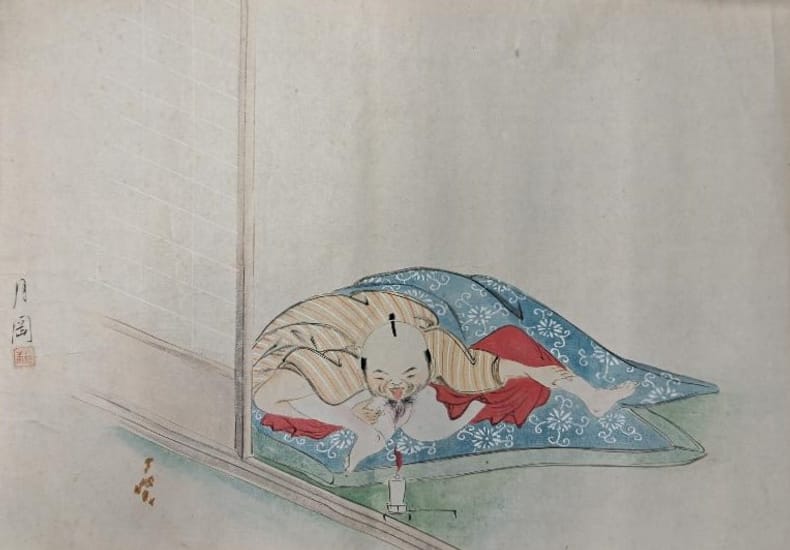
|
|
|
[JAPON]. ILLING (Richard)
Japanese Prints.
Londres, Tiger Books, 1989. In-folio, broché, 65 pp., texte anglais, 24 planches en noir et 32 en couleurs.
Bookseller reference : 559736 ISBN : 1870461673
|
|
|
[Jean ARP] Hans ARP
Lithographie originale
Louis Broder | Paris s. d. [ca 1961] | 20 x 24.10 cm | une feuille
Bookseller reference : 77681
|
|
|
[Jessen, Heinrich
Trachten aus Alt-Hamburg. Hamburg, B. S. Berendsohn, Wilhelm Jowien, and others, 1850].
With 50 hand-coloured full-page plates (c. 200 x 125 mm) heightened with egg-white, (44 lithographs, 3 engravings, 3 wood-engravings), of which 33 are after drawings by Heinrich Jessen. Contemporary blindstamped decorated red cloth, front cover with title lettered in gold. Charming colour plate book mainly with military costumes. Some of these plates were published earlier in F.G. Buek's "Album hambürgischer Costüme", 1843-1847. The plates depict messenger boys, maidservants, a police officer, several military men on horseback, etc. - Hinges weak, top and lower part of spine damaged. Coloured costumes in good condition. Colas 1547. Hiler 479. Lipperheide 809.
|
|
|
[Joseph II., Franz II.].
Zwei aufmontierte gestochene Wappen im Rund, spätes 18. Jh. O. O. u. D.
Ausgeschnittene Kupferstiche, jeweils ca. 72 mm Durchmesser. Auf Trägerpapier (ca. 218:306 mm). Die Wappen von Kaiser Joseph II. (1780er Jahre) sowie seines Neffen Franz II. (hier nicht als Kaiser, nur mit Erbtiteln: wohl 1792). - Das Trägerpapier etwas angestaubt.
|
|
|
[Karl August, Duke of Saxe-Weimar-Eisenach].
Portrait of Duke Karl August of Saxe-Weimar-Eisenach. [Weimar, after 1775].
590 x 460 mm. Pastel on vellum. Framed and glazed. Unsigned, undated half-length portrait of the Duke (1757-1828), Goethe's friend and patron, in his early twenties. This work by an unidentified Thuringian master strongly resembles the one at Dornburg castle listed as no. 19 in Hans Wahl's census ("Pastellgemälde von unbekannter Hand. 1775-80"). Goethe frequently stayed at this Ducal palace when in Dornburg on business. The painting is probably one of a small number of contemporary copies based on the oil painting by Johann Ernst Heinsius (Wahl no. 14), but with softer contours and brighter colours, as common for pastel crayons. - Two tears of about eight centimetres each near top and bottom edge of paper, professionally restored. Occasional rubbing to colours; some overpaintings and staining. Ownership of the anthroposophical physician Karl Hanno Matthiolius (1923-91), dated Solingen-Landwehr, 28 Nov. 1945, on the reverse. H. Wahl, "Die Bildnisse Carl Augusts von Weimar" (Weimar 1925), no. 19.
|
|
|
[Klimt, Gustav] - Geyling, Remigius, painter and stage designer (1878-1974).
Collection of 23 portrait drawings and caricatures, all drawn "from life" and signed, dated, and titled by Geyling (often citing the place of the sitting). Includes two T.L.S. by Arthur Schnitzler. Vienna, 1897-1935.
Royal folio. In later years mounted onto uniform backing boards by Geyling himself and laid into two simple portfolios, both of which contain his autogr. table of portraits. All leaves numbered throughout by the artist (1-24; Schnitzler's letters on their own backing are no. 23) and captioned with the name and dates of the person portrayed. The earliest portrait dates from 1897, the year in which the Vienna Secession and the artistic periodical "Ver Sacrum" were founded. According to his inscription, it was for the latter that Geyling drew the present portrait of the Secessionist sculptor Rudolf Bacher. Many of the pictures collected in these two portfolios were created several years later, in 1905, during the heyday of the Wiener Werkstätte (for which Geyling designed postcards) and a year after Geyling and his partner Otto Prutscher closed their joint studio for furnishings and décor. "Although a member of the conservative 'Künstlerhaus', Geyling always was close to the Vienna Secession" (cf. AKL LII, 462). For Geyling, "Klimt, Hoffmann, Roller, Olbrich were not only my colleagues, but also my friends, and many a night did we debate about the 'new and pure art'" (cf. Remigius Geyling erzählt, aufgezeichnet von Gerald Szyszkowitz. In: Nebehay/Krug, pp. 5-8, here: p. 7). These nights apparently offered numerous opportunities for Geyling's portrait studies: apart from the portraits of the aforesaid, the present collection contains a picture of the frequent Tivoli patron Egon Schiele (from the year of his death) as well as a portrait of Adolf Loos, drawn in the famous Café Museum. It was probably here where also Karl Kraus (entitled "Fackl-Kraus" by the artist) sat for Geyling. The great painter enjoyed an especially close relationship to Gustav Klimt: for many years he belonged to the circle of those who shared breakfast with Klimt at the Tivoli (cf. Nebehay/Krug, p. 3). In that legendary restaurant at the Green Hill in Vienna's Meidling district, he drew the two portraits of Klimt in May 1905. Together with Peter Altenberg and Otto Wagner, Klimt is one of the few persons whom Geyling sketched in more than one portrait only (all on a single page). It was upon Klimt's recommendation that Geyling was hired as head of decorations at the "Neue Wiener Bühnen" in 1910; his first production was the premiere of Schnitzler's "Undiscovered Country". It was during the rehearsals for this production, on 14 October 1911, that Geyling produced the present portrait of Schnitzler. Schnitzler's two letters to Geyling concern their joint project of a "Medardus movie". Geyling had worked as decorator for the most important Austrian film productions. So successfully had he transferred the stylistic devices of the Wiener Werkstätte into historical tragedy that in 1924 Fritz Lang used Geyling's designs for his great silent "Nibelungen" series (cf. AKL LII, 462). - Provenance: From a Viennese private collection, to which the artist himself sold both portfolios. Nos. 6-8 and 18, 21 and 22 are each illustrated in full-page size in: Ch. M. Nebehay & H. Krug (eds.). Remigius Geyling. Künstler und Literaten. Gezeichnet in Wien um 1900. Wien 1974. (= Jahresgabe der Wiener Bibliophilengesellschaft). This work does not describe the present collection; all other drawings are unpublished.
|
|
|
[Kupferplatte].
Pius VII. Wohl Rom, 1800.
Gestochene Kupferplatte (120:166 mm). Unsigniertes Portraitkupfer des Papstes Pius VII. (Graf Luigi Barnabà Niccolò Maria Chiaramonti; 1742-1823), wohl anläßlich seiner Papstkür am 21. März 1800 gestochen. Unter dem ovalen Brustbild das Wappen des Papstes.
|
|
|
[Kärnten - Gurktal].
Sammlung von 19 Landschaftsansichten. Gurktal, 1837-1856.
14 Aquarelle (teils auf Tonpapier) und 4 Bleistiftzeichnungen (2 auf Tonpapier, deckweißgehöht) sowie eine Photographie (Albuminabzug). Zum Teil auf Trägerkarton aufgezogen; Maße ca. 170 x 106 mm. Verso von zeitgenöss. Hand datiert und beschriftet: "Osterwiz, 10tes (bzw.) 9tes Thor von der Rükseite", "Hammerwerk Gurk, Strassburg", "Magdalenenkapelle, Weitensfeld, Altenmarkt", "St. Jakob ober Gurk", "Gundersdorf und Portendorf. Mittagskogel, SIngerberg", "Das schwarze Kreuz bei Gurk", "Draschlbach-Teich und Graben", "An der Gurk: Fernschau nach Mieger und auf den Obir", "Die Gurk: Pregradhof und Zweiniz", "Althofen von Rabenstein aus gesehen", Gut Gundersdorf", "Maiereiteich in Gurk, Aussicht gegen Westen auf die Amtmannwiese", "Verweserhaus am Drahtzuge St. Magdalene, mit der Fernsicht auf Althofen" (Aquarelle); "Silbereck, Fuchshof, Althofen, Grebenze", "Maitratten mit dem Koflachgebirge", "Launsdorf. Mannsberg, Teich bei Osterwiz", "Kalvarienberg Klagenfurt" (Bleistift). Die Photographie (91 x 55 mm auf Träger) zeigt Treibach-Althofen. - Sauberes, wohlerhaltenes Ensemble.

|
|
|
[Köpfe 1920].
Köpfe 1920. Eine Sammlung von Bildnis-Radierungen bekannter Persönlichkeiten. (Leipzig, Verlag Friedrich Dehne), [1920].
Folio (290 x 388 mm). 12 matted portrait etchings, individually numbered and signed by the artists as well as the sitters. Stored in publisher's original portfolio with vellum spine and gilt title to papered boards. Number 33 of 50 copies of the deluxe issue (entire press run: 150), each portrait bearing the additional signature of the sitter. The sitters are Lovis Corinth, Albert Einstein, Sigmund Freud, Gerhart Hauptmann, Wolfgang Heine, Ludwig von Hofmann, Arno Holz, Arthur Nikisch, Wilhelm Ostwald, Max Reinhardt, Richard Strauss, and August von Wassermann; the artists were Eduard Einschlag, Friedrich (Bedrich) Feigl, Ivo Hauptmann, Ernst Oppler, Robert Friedrich Karl Scholtz, and Walter Zeising (one etching each) as well as Hermann Struck (six etchings). Gerhart Hauptmann's portrait is by his son Ivo. - Upper cover of the portfolio very slightly warped. Light browning or foxing to versos of mattes; rectos and etchings all nearly perfectly clean and crisp. Extremely rare: libraries record a single copy of the sequel ("Köpfe 1921"), a series of only nine portraits that the publisher issued the following year (National Library of Israel).
|
|
|
[La Chatre, Pierre-Denis de], officer of the Empire and Baron (1763-1820).
2 miniatures. No place, [ca. 1805].
60 mm (diameter) and 62 x 75 mm. In their original brass and wooden frames. Half-length portrait of baron de La Châtre, the father of the publisher Maurice Lachâtre, with the decoration of the "Légion d'honneur" clearly visible on his robe. He was born and died in Issoudun, was appointed a knight on 12 December 1803 and promoted to the rank of an officer on 14 June 1804. He participated in the Revolutionary Wars as well as in the Napoleonic Wars, reaching the rank of colonel, and was granted the title of a "Baron de l'Empire" on 19 March 1808. Narrow cracks in the portrait; small flaw at lower margin. - Half-length portrait of his wife and the mother of Maurice Lachâtre, Élisabeth-Constance Séonnet (born on 23 June 1784 in Issoudun, died on 13 November 1860 in Maisons-Laffitte), in a sitting position, her left arm resting on the back of the chair, wearing a white dress and a furry scarf round her shoulders. The miniature was probably created soon after her wedding on 13 April 1803. Marginal flaw to wooden frame. Xavier Gaignault et Hervé Coutau-Bégarie, Le colonel Pierre-Denis de La Châtre, baron de l’Empire (Éditions Guénégaud, 2007).
|
|
|
[LAGUERENNE (E. de)]
[Estampe]. "Juives d'Oran". Lithographie en couleurs, non signée.
Moulins, Desrosiers, (1840). 19 x 22 cm à la composition + marges.
Bookseller reference : 31838
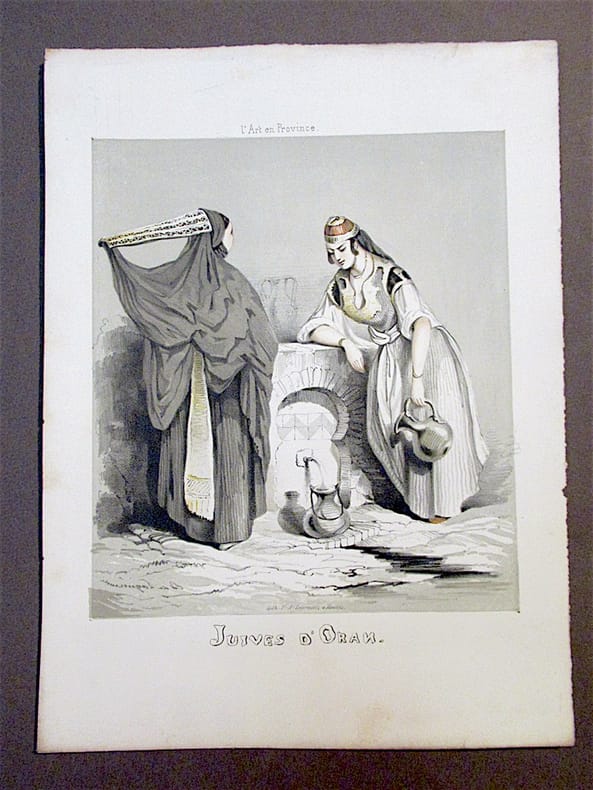
|
|
|
[Landsberg am Lech].
"Landsberg". O. O., (wohl 1980er Jahre).
Radierung. 8vo (170:205 mm) unter Passepartout (Folio). Der Hauptplatz der Stadt Landsberg am Lech mit dem Marienbrunnen und figürlicher Staffage. Originalgraphik in kleiner Auflage (82/100) mit nicht identifizierter Signatur ("Kondotti"?) in Bleistift.
|
|
|
[Laxenburg].
[Laxenburg bei Wien in bildlicher Darstellung. Vienna, Lithogr. Institut, 1820-1826].
47 (instead of 55) lithographs (c. 610 x 485 to 480 x 385 mm). In contemp. cloth portfolio with ties. Large folio (630 x 490 mm). "Privately printed at the command of Emperor Franz I and published in a very small press run, not available to the common public [...] Shows views, interiors, decorations, etc. [...] The plates are not captioned or numbered" (cf. Nebehay/W.). Drawn by Jakob Alt, Johann Rupp, Carl Bschor, and Albert von Radmannsdorf. - Slight fingerstaining and foxing (usually confined to margins); some small tears. Portfolio is rather severly rubbed. Wants nos. 1, 4-6, 15-17, and 20. The view of the castle from the South is a lithograph by Jakob von Alt, not an anonymous etching as in the Albertina copy. No. 7 ("Gothische Brücke") is a trial print from the collection of the great Austrian otologist Adam Politzer (1835-1920), whose collection was sold by Schwarz in 1922 (cf. Lugt 2037 and 2741). "Il collectionnait depuis 1870 environ, sans système bien défini, mais seulement d'après son goût artistique [...] L' amateur a consacré une attention spéciale à la lithographie, de ses debuts à l'année 1880" (Lugt, p. 513). Nebehay/Wagner 359. H. Schwarz (Anfänge der Lithographie in Österr.) 76.

|
|
|
[Laxenburg].
[Laxenburg bei Wien in bildlicher Darstellung. Wien, Lithogr. Institut, 1820-1826].
16 (statt 55) Lithographien (Blattmaße ca. 600:485 mm bis 470:350 mm). Lose. "Privatdruck auf Befehl Kaiser Franz I., in sehr kleiner, nicht für den Handel bestimmter Auflage erschienen [...] Außer Ansichten zeigen die Darstellungen auch Interieurs, Dekorationen etc. [...] Die Tafeln sind nicht beschriftet und nicht numeriert" (Nebehay/W.). Gezeichnet von Jakob Alt, Johann Rupp, Carl Bschor und Albert von Radmannsdorf. Die vorliegende Reihe umfaßt die Blätter 2, 9, 10, 19, 21, 23, 36, 39-41, 44, 46, 48, 53-55 (Zählung nach Nebehay/W.). - Teils leicht finger- bzw. stockfleckig (zumeist nur den Rand betreffend) und mit kl. Randeinrissen. Das Blatt 19 ("Innere Hofraum-Ostseite") in beidseitig bedrucktem Probeabzug, aus der Sammlung des großen österreichischen Otologen Adam Politzer (1835-1920), dessen graphische Sammlung 1922 bei Schwarz in Wien versteigert wurde (vgl. Lugt 2037 und 2741; die vorliegende Stempelvariante nicht bei Lugt). "Il collectionnait depuis 1870 environ, sans système bien défini, mais seulement d'après son goût artistique [...] L' amateur a consacré une attention spéciale à la lithographie, de ses debuts à l'année 1880" (Lugt, S. 513). Das Blatt 40 ("Plafond im Prunksaale") ebenfalls im Probeabzug, hier auf rückseitig bedrucktem Makulaturpapier. Nebehay/Wagner 359. H. Schwarz (Anfänge der Lithographie in Ö) 76.

|
|
|
[Laxenburg]. Carl Bschor und Albert von Radmannsdorf.
[Ansicht vom Prunksaale. Wien, Lithogr. Institut, 1820-1826].
Lithographie (Blattmaß ca. 483:607 mm). Das wohl eindrucksvollste Einzelblatt aus der 55 Blätter umfassenden Folge "Laxenburg bei Wien in bildlicher Darstellung", die 1820-26 in Wien erschien. "Privatdruck auf Befehl Kaiser Franz I., in sehr kleiner, nicht für den Handel bestimmter Auflage erschienen" (Nebehay/W.). - Die Ränder gering angestaubt bzw. geknittert, sonst tadellos. Nebehay/Wagner 359, 36.

|
|
|
[LE CORREGE]. LANDON (Charles-Paul)
Vie et œuvre du Corrège.
S.l.n.d. [Paris, C. P. Landon, 1817]. Grand in-4, demi-basane verte (XIXe s.), dos lisse titré orné de filets dorés, 36 pp. de texte suivi de 60 planches gravées par Normand ou Frémy.
Bookseller reference : 566069
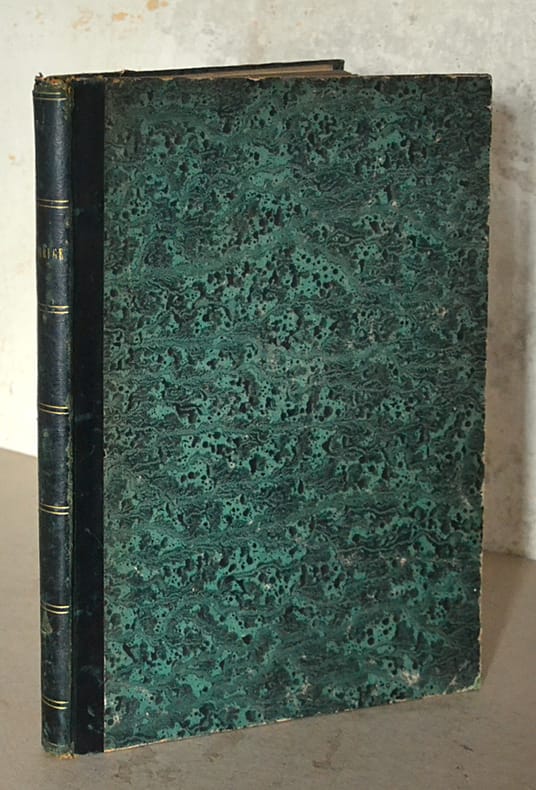
|
|
|
[LEDOUX] - [JAPANESE PRINTS]
Japanese Prints of the Ledoux Collection - The Primitives
E. Weyhe, New York, 1942. 1 volume in-folio, 186 pp., with 50 early Japanese woodblock prints, each with a short description; 20 full-color plates and 30 in halftone. Cloth and patterned paper, title label and gilt title on spine. Printed on fine paper. Depite some foxing on title page, a very good copy.
Bookseller reference : 6461
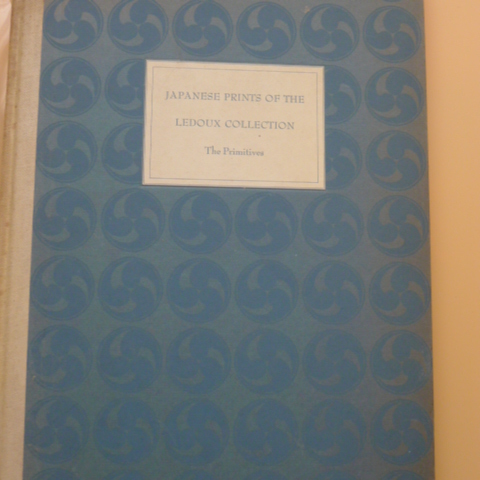
|
|
|
[LEPERE]. - SAUNIER (Charles)
A. Lepère. 1849-1918. Peintre et graveur, décorateur de livres.
P., Le Garrec, 1931. Gd in-4 broché, couv. imprimée en brun rempliée, 283 pp., bandeaux et culs de lampe, in fine catalogue des 274 œuvres de Lepère par G.M. Texier-Bernier (suite au catalogue Lotz-Brissonneau). Tirage limité à 650 exemplaires numérotés. Un des 500 sur vélin pur fil Lafuma, n°413.
Bookseller reference : 542085
|
|
|
[Linogravure/Pataphysique] CHEMIN (Robert).
Noël Arnaud peignant la Gi...douille.
Linogravure, collage avec rehaut de gouache. 1991. Justifiée et titrée à la mine de plomb. Tiré à 26 exemplaire. Sous cadre, dim: 640 x 570 mm. Provenance Collection Noël Arnaud.
Bookseller reference : 989

|
|
|
[Linogravure/Pataphysique] CHEMIN (Robert).
Noël Arnaud peignant la Gi...douille.
Linogravure, collage avec rehaut de gouache. 1991. Justifiée et titrée à la mine de plomb. Tiré à 26 exemplaire. Sous cadre, dim: 640 x 570 mm. Provenance Collection Noël Arnaud.
Bookseller reference : 989

|
|
|
[Lithographie] GROPPER (William)
Sans titre
Lithographie originale. Dim: 27,5 x 21,2 cm. Épreuve d'artiste signée et justifiée par l'artiqte à la mine de plomb.
Bookseller reference : 2232

|
|
|
[Lithographie] GROPPER (William)
Sans titre
Lithographie originale. Dim: 27,5 x 21,2 cm. Épreuve d'artiste signée et justifiée par l'artiqte à la mine de plomb.
Bookseller reference : 2232

|
|
|
[Lithographie] MILLER (Jack)
Dixie Highway Miami.
Impression en lithographie. 1979. Dim: 64 x 91 cm. Tirée à 90 exemplaires. Signée et justifiée par l'artiste. Encadrée.
Bookseller reference : 1469
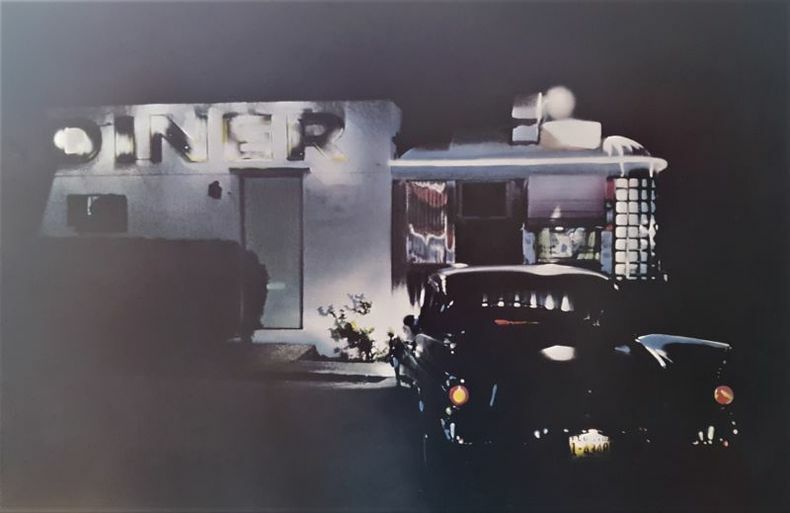
|
|
|
[Lithographie] MILLER (Jack)
Dixie Highway Miami.
Impression en lithographie. 1979. Dim: 64 x 91 cm. Tirée à 90 exemplaires. Signée et justifiée par l'artiste. Encadrée.
Bookseller reference : 1469

|
|
|
[Lithographie] MILLER (Jack)
Downtown Acapulco.
Impression en lithographie. 1979. Dim: 64 x 91 cm. Tirée à 90 exemplaires. Signée et justifiée par l'artiste. Encadrée.
Bookseller reference : 1470
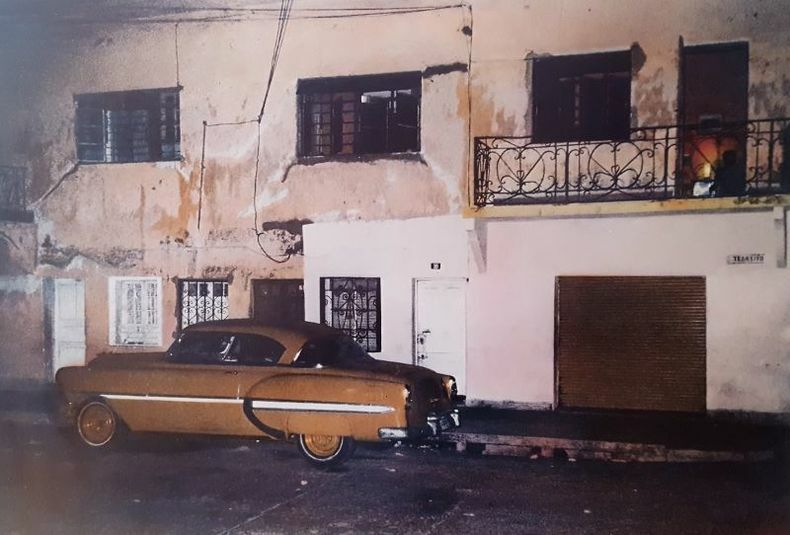
|
|
|
[Lithographie] MILLER (Jack)
Downtown Acapulco.
Impression en lithographie. 1979. Dim: 64 x 91 cm. Tirée à 90 exemplaires. Signée et justifiée par l'artiste. Encadrée.
Bookseller reference : 1470

|
|
|
[Lithographie] MILLER (Jack)
Downtown Miami.
Impression en lithographie. 1979. Dim: 64 x 91 cm. Tirée à 90 exemplaires. Signée et justifiée par l'artiste. Encadrée.
Bookseller reference : 1471

|
|
|
[Lithographie] MILLER (Jack)
Downtown Miami.
Impression en lithographie. 1979. Dim: 64 x 91 cm. Tirée à 90 exemplaires. Signée et justifiée par l'artiste. Encadrée.
Bookseller reference : 1471

|
|
|